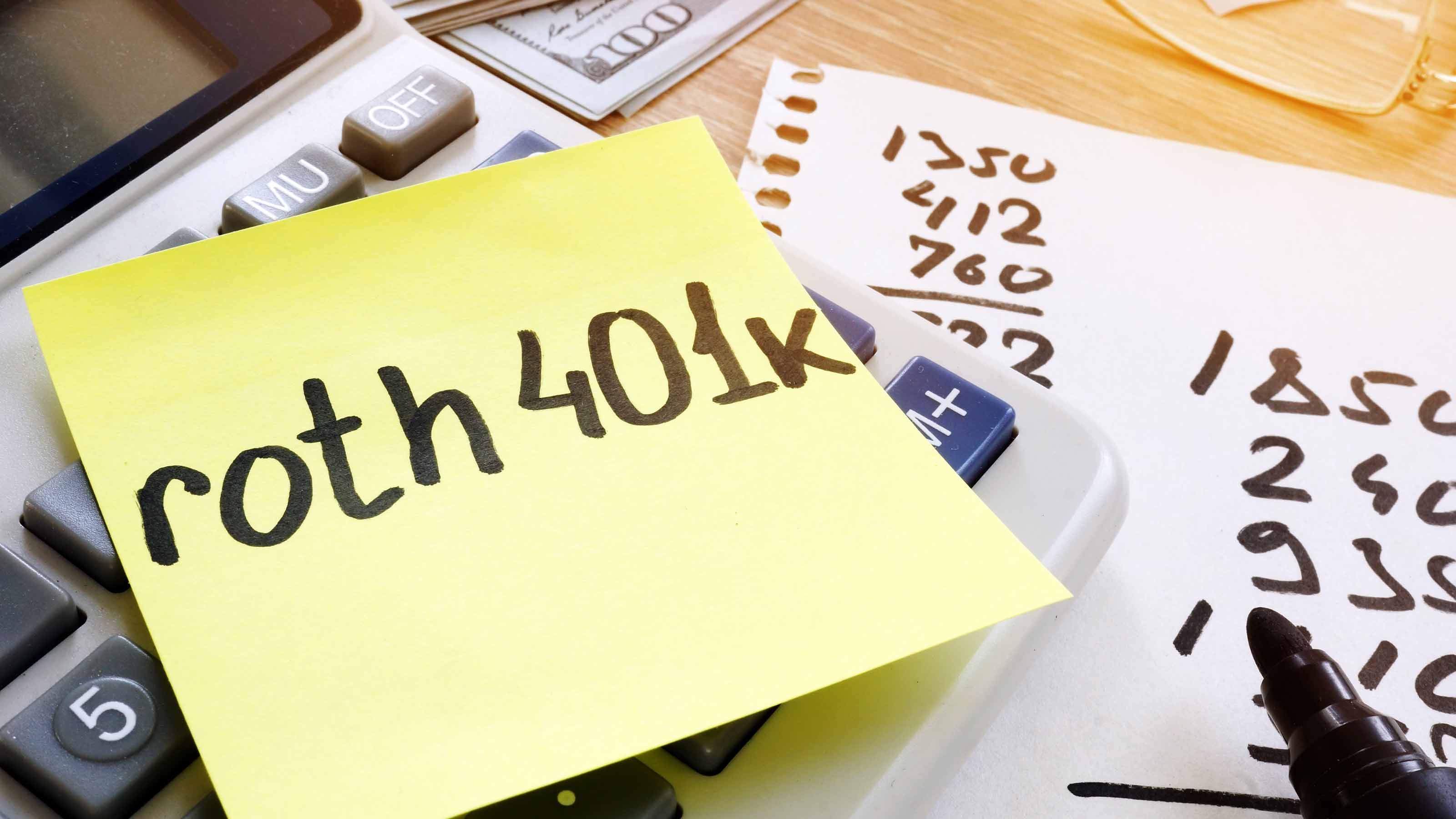SIMPLE IRA Contribution Limits for 2026
For 2026, the SIMPLE IRA contribution limit rises to $17,000, with a $4,000 catch-up for those 50 and over, totaling $21,000.

A Savings Incentive Match Plan for Employees (SIMPLE) IRA is a retirement plan specifically designed for self-employed individuals and small businesses with 100 employees or fewer. It's a more affordable (and easier) plan for employers to set up compared to a traditional 401(k). However, the amount a worker can save in a SIMPLE IRA is less than what they can save in a 401(k).
2026 SIMPLE IRA contribution limits
The SIMPLE IRA contribution limit increased for 2026. Keep in mind that contributions to SIMPLE IRA accounts are always 100% vested by the employee.
In 2026, employees at small businesses can now contribute up to $17,000 (an increase from $16,500 in 2025) or $21,000 if aged 50 or older (an increase from $20,000 in 2025), as per new IRS guidelines. The catch-up contribution limit for employees aged 50 and over has increased to $4,000 for 2026 (up from $3,500 in 2025), bringing total contributions for this age group to $21,000, according to the IRS.
From just $107.88 $24.99 for Kiplinger Personal Finance
Become a smarter, better informed investor. Subscribe from just $107.88 $24.99, plus get up to 4 Special Issues

Sign up for Kiplinger’s Free Newsletters
Profit and prosper with the best of expert advice on investing, taxes, retirement, personal finance and more - straight to your e-mail.
Profit and prosper with the best of expert advice - straight to your e-mail.
Due to a change in SECURE 2.0, a different catch-up limit applies to employees aged 50 and over who participate in certain SIMPLE plans. That limit remains $3,850, unchanged from 2025.
Also, thanks to SECURE 2.0, individuals can contribute an even higher amount to certain SIMPLE retirement accounts (generally, employees of small businesses with 25 or fewer workers). For 2026, this higher amount is increased to $18,100, up from $17,600 for 2025.
By comparison, workers younger than 50 can set aside $24,500 in a traditional 401(k) in 2026, up from $23,500 last year. They can add another $8,000 if they're 50-plus.
Under SECURE 2.0 (enacted in 2022), the enhanced "super catch-up" contribution limits for participants aged 60 to 63 are:
401(k) plan participants: Individuals age 60 to 63 may contribute an additional $11,250 instead of the standard $8,000, raising the total limit to $35,750 in 2026.
SIMPLE IRA participants: Individuals aged 60 to 63 with a SIMPLE IRA cannot contribute the additional $11,250 that those with a 401(k) can. Instead, they are subject to the regular SIMPLE IRA limits and are eligible for a catch-up contribution of $5,250, resulting in a total contribution limit of $22,250.
Employee contributions to a SIMPLE IRA are made on a pretax basis, which lowers taxable income. The invested money grows tax-sheltered until you withdraw it in retirement, when those distributions are taxed as ordinary income.
If you pull money out before age 59-1/2, you face a 10% early-withdrawal penalty on top of taxes. The withdrawal penalty increases to 25% for SIMPLE IRAs if money is pulled out within two years of signing up for the plan.
2026 SIMPLE IRA contribution deadlines for employees and employers
There are different deadlines for self-employed owners with no employees, employees and employers to make contributions to SIMPLE IRAs.
Employee contributions. Contributions to SIMPLE IRA plans that are taken from an employee's paycheck as salary reduction contributions (also called elective deferral contributions) are due within 30 days after the end of the month in which the amounts would otherwise have been payable to the employees in cash. For instance, contributions must be deposited into the SIMPLE plan by September 30 of the same year for money taken from an employee's pay in August.
Self-employed with no employees. For self-employed persons with no common-law employees, the latest date for depositing salary reduction contributions for a calendar year remains 30 days after the end of the year, or January 30.
Deadlines for employer contributions. The IRS requires contributions made on behalf of the employer to be due by the business's filing due date for the tax year — April 15 or October 15 if an extension is filed.
The Department of Labor (DOL) requires employee contributions to be deposited as soon as reasonably possible. For businesses with over 100 employees, contributions must be deposited no later than 30 days after the end of the month in which the amounts would otherwise have been payable to the employee, and no later than seven business days for businesses with fewer than 100 employees.
New Roth SIMPLE IRA
A SIMPLE IRA can now be set up as either a traditional IRA or a Roth IRA. The Roth SIMPLE IRA was created by the 2022 SECURE Act 2.0, so some employers may not offer it yet.
If the SIMPLE IRA is a Roth, the employee contribution goes into the account after tax. Then the money can grow tax-free for decades and will be tax-free when withdrawn from the account beginning at age 59-½.
For 2026, employees can contribute up to $17,000 (up $500 from $16,500 in 2025) and $21,000 (up from $19,500 in 2025) for employees age 50 and over. Roth contributions are not deductible, but distributions are tax-free in retirement.
These dollar limits are aggregate for all pre-tax and Roth deferrals; in other words, you can’t contribute $17,000 in pre-tax deferrals and then an additional $17,000 in Roth deferrals in 2026.
Similar to 401(k) plans, employees will likely be able to contribute any combination of pre-tax and Roth deferrals up to the annual limit. For example, an employee under age 50 may be able to contribute $10,000 in pre-tax deferrals and $7,000 in Roth deferrals to reach the $17,000 limit in 2026.
Employer contributions to SIMPLE IRAs
Workers participating in a SIMPLE IRA will always get a helping hand saving for retirement because employers must make some form of a contribution to employees' accounts. Self-employed people are allowed to contribute both their own and the employer’s share to a SIMPLE IRA.
An employer can choose to either make a dollar-for-dollar match of up to 3% of a worker's pay or contribute a flat 2% of compensation, whether the employee contributes or not. If your employer matches dollar-for-dollar up to 3% of pay, make sure you're contributing at least enough to qualify for the full match. If an employer contributes the flat 2% amount, the calculation for those non-elective contributions cannot be based on more than $360,000 in 2026 (up from $350,000 in 2025) of the employee’s salary.
The money your employer contributes is vested immediately, which means those contributions are yours from the start and you get to take them with you when you leave no matter how long you’ve worked for the company. By contrast, other employer retirement savings plans, such as 401(k)s and 403(b)s, may require that you work for that employer for a set period, such as three or four years, to be fully vested.
SIMPLE IRAs offer a much broader selection of investments than most employer-sponsored retirement savings plans. In a SIMPLE IRA, workers can not only choose from thousands of mutual funds and exchange-traded funds but also hold individual stocks and bonds. The best investment is one that fits your long-term goals at the right price.
How SIMPLE IRA savers can build an even bigger nest egg
SIMPLE IRA participants are allowed to contribute to an individual IRA at the same time, enabling retirement savers to maximize their contributions on two fronts. If you're already stashing away the maximum contribution allowed in your SIMPLE IRA — $17,000 for employees younger than 50, or $21,000 for 50-plus workers in 2026 — but want to save even more for retirement, consider opening a separate traditional IRA or Roth IRA.
Self-employed people may also fund a traditional IRA or Roth at the same time, as well as a SEP IRA, provided they adhere to overall contribution limits. In 2026, the contribution limit for individual IRAs is $7,500, and the catch-up contribution limit is $1,100 for those aged 50 and over, allowing them to contribute an additional amount to their accounts.
For 2026, individuals younger than 50 can contribute up to $7,500 (up from $7,000 in 2025) to a traditional IRA or Roth IRA. Retirement savers age 50 and up can make an additional $1,100 catch-up contribution. There is no super catch-up contribution for traditional or Roth IRAs.
Roth IRAs have income limits. The maximum amount you can contribute to a Roth IRA for 2026 begins to phase out once modified adjusted gross income hits $153,000 for single filers and $242,000 for those who are married and filing jointly.
There's no tax deduction for Roth IRA contributions. Contributions to a traditional IRA for both 2025 and 2026 are tax-deductible, though this benefit will phase out if you also contribute to a 401(k) plan at work and reach a certain income threshold. The tax deduction phases out for single filers who have a modified gross income between $81,000 and $91,000 in 2026 (up from $79,000 and $89,000 in 2025).
If an IRA contributor is covered by a work retirement plan, joint filers must earn $129,000 or less to claim the full tax deduction in 2026 (up from $126,000 in 2025). The deduction is fully phased out once you make $149,000 or more in 2026 (up from $146,000 in 2025).
If an IRA contributor is not covered by a retirement plan at work, then the deduction is phased out between $242,000 and $252,000 in 2026, up from $236,000 and $246,000 for joint filers in 2025.
What you need to know about SIMPLE IRAs
SIMPLE IRAs have fewer rules and offer lower start-up and operating costs compared to traditional retirement plans, making them a practical choice for small businesses.
SIMPLE IRAs are required by law to match employee contributions, but employee matching is an excellent way for employers to help attract and retain employees.
Matching employer contributions are vested immediately and can go with employees whenever they leave, regardless of how long they’ve been on the job. These plans also provide tax-deferred growth on contributions until the funds are withdrawn.
Related Content
- IRA and SEP Rules at a Glance: Contribution Limits, Income Limits and Rollover Options
- Roth IRA vs. Traditional IRA: Which Is Better?
- The Average IRA Balance by Age
- Qualify for Roth IRA Contributions by Lowering Your Income
Profit and prosper with the best of Kiplinger's advice on investing, taxes, retirement, personal finance and much more. Delivered daily. Enter your email in the box and click Sign Me Up.
Jackie Stewart is the senior retirement editor for Kiplinger.com and the senior editor for Kiplinger's Retirement Report.
- Kathryn PomroyContributor
- Donna LeValleyRetirement Writer
-
 I'm 73 and hate winter, but I can't afford to be a snowbird.
I'm 73 and hate winter, but I can't afford to be a snowbird.How can a snowbird wannabe warm up without the expense? We asked professional wealth planners for advice.
-
 5 Smart Things to Do With Your Year-End Bonus
5 Smart Things to Do With Your Year-End BonusAfter you indulge your urge to splurge on a treat, consider doing adult things with the extra cash, like paying down debt, but also setting up a "fun fund."
-
 Gen X Investors: Protect Your Portfolio From an AI Bubble
Gen X Investors: Protect Your Portfolio From an AI BubbleAmid talk of an AI bubble, what's the best course of action for investors in their 50s and 60s, whose retirement savings are at risk from major market declines?
-
 457 Plan Contribution Limits for 2026
457 Plan Contribution Limits for 2026Retirement plans There are higher 457 plan contribution limits in 2026. That's good news for state and local government employees.
-
 Medicare Basics: 12 Things You Need to Know
Medicare Basics: 12 Things You Need to KnowMedicare There's Medicare Part A, Part B, Part D, Medigap plans, Medicare Advantage plans and so on. We sort out the confusion about signing up for Medicare — and much more.
-
 The Seven Worst Assets to Leave Your Kids or Grandkids
The Seven Worst Assets to Leave Your Kids or Grandkidsinheritance Leaving these assets to your loved ones may be more trouble than it’s worth. Here's how to avoid adding to their grief after you're gone.
-
 SEP IRA Contribution Limits for 2026
SEP IRA Contribution Limits for 2026SEP IRA A good option for small business owners, SEP IRAs allow individual annual contributions of as much as $70,000 in 2025, and up to $72,000 in 2026.
-
 Roth IRA Contribution Limits for 2026
Roth IRA Contribution Limits for 2026Roth IRAs Roth IRAs allow you to save for retirement with after-tax dollars while you're working, and then withdraw those contributions and earnings tax-free when you retire. Here's a look at 2026 limits and income-based phaseouts.
-
 457 Contribution Limits for 2024
457 Contribution Limits for 2024retirement plans State and local government workers can contribute more to their 457 plans in 2024 than in 2023.
-
 Roth 401(k) Contribution Limits for 2026
Roth 401(k) Contribution Limits for 2026retirement plans The Roth 401(k) contribution limit for 2026 has increased, and workers who are 50 and older can save even more.
-
 Is a Medicare Advantage Plan Right for You?
Is a Medicare Advantage Plan Right for You?Medicare Advantage plans can provide additional benefits beneficiaries can't get through original Medicare for no or a low monthly premium. But there are downsides to this insurance too.